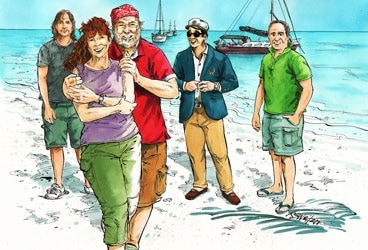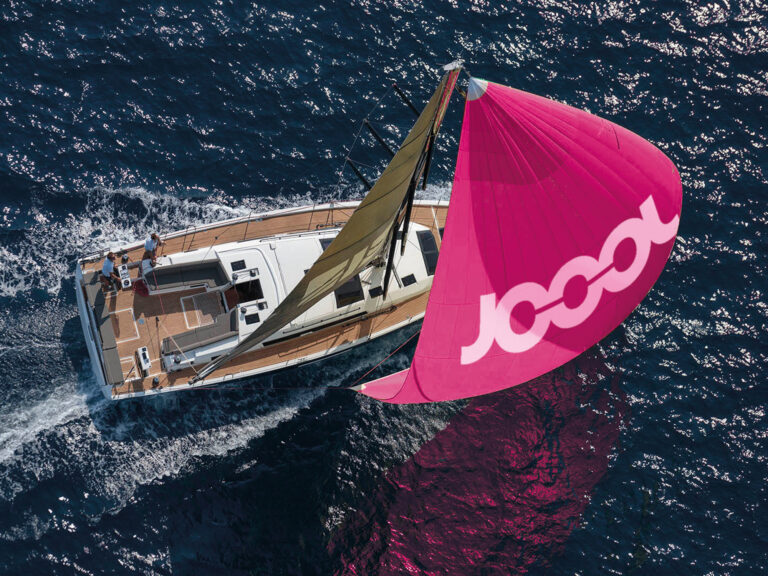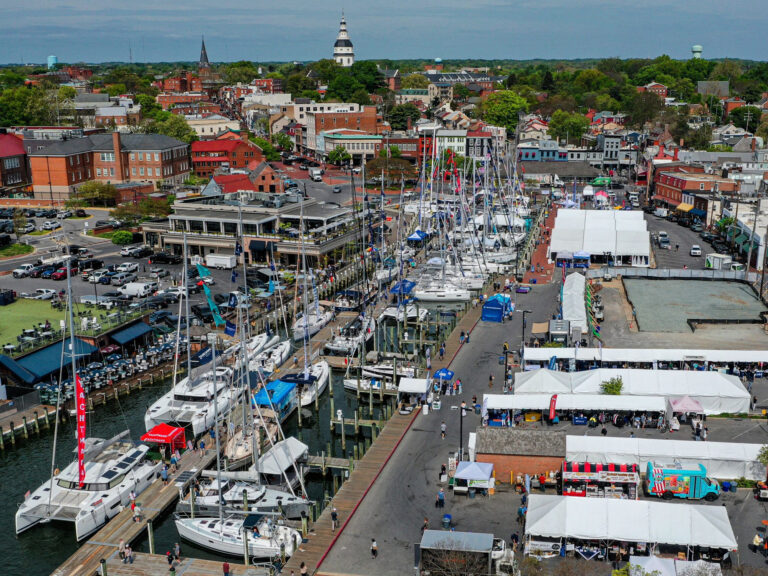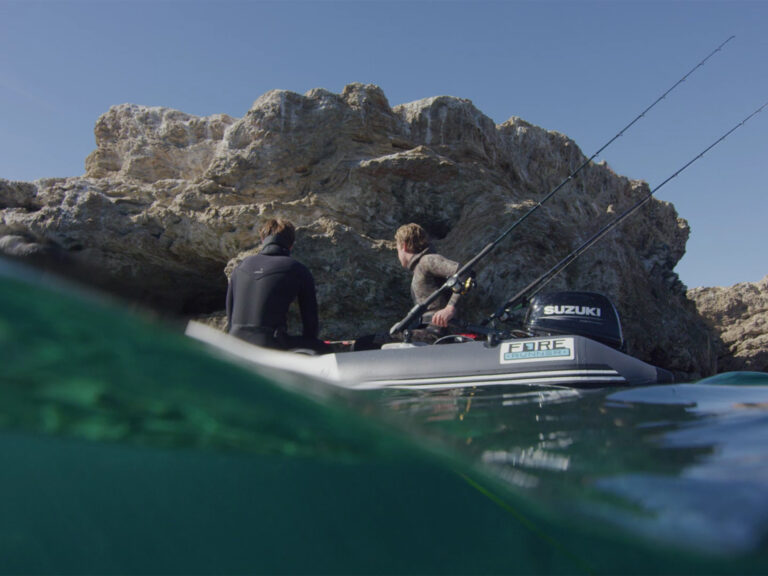
rich man poor man 368
One of the most common questions I’m asked at boat shows is “How much does it cost to cruise the world?” The best answer, alas, seems like an evasion: “It costs what you can afford.”
I’m currently anchored off a tiny island in the middle of the Indian Ocean. There are six other boats with crews from seven countries here. One is owned by a retired Swiss businessman; another is skippered by a young, shoeless, wild-haired Viking from Norway. The large catamaran has a middle-aged Spanish owner, who’s chilling out from his recent business triumph and attempting to decide whether to jump back into high-tech. The Polish professor is on his way to England, where he’ll go back to work with his Aussie wife, who’s a nurse. The motorsailor from Britain is retired, but barely so. The German skipper is careful with his pennies, too. Carolyn and I, of course, work and write as we cruise.
The reality is that the average sailor doesn’t exist. We’re a tremendously diverse group of highly effective individuals-united only in our quest for freedom and by our lusty sense of adventure. We come from every corner of the globe; our ages range from 17 to beyond 70. Some of us are just starting out in life, and others are happily sailing into the sunset. Some have zero money in the bank and zero income, while others have many zeros in both.
This is as it should be. Different people have different incomes (especially at different stages in their lives) and thus spend their money in different amounts on different things. Rich man and poor man both sit down to dinner-but the cost of the fare varies widely. Ditto with boats and cruising.
Most world cruisers spend what they’re economically comfortable with spending, no more, no less. Thus, if they’ve been economically successful in life, they rent cars, stop in marinas, and take endless side trips. They refit in both New Zealand and Cape Town. When one sail shows wear, they buy a new suit. If only one halyard is chafed, they replace all the running rigging. Why not? Why shouldn’t they devote some of their leisure time to figuring out creative ways to share their wealth with the Third World?
Yes, everyone makes daily spending choices, and those choices have a cumulative effect on our lifestyles. I’ve always chosen freedom and fun over commerce, so it’s only right that I have little money. I deserve little money. So I have a modest boat and do all my own work. I seldom visit marinas, and when I do, they’re in Asia or somewhere equally thrifty. We don’t rent cars or eat in restaurants often. When we travel ashore or fly back to the States, we make sure it’s on someone else’s corporate nickel. (We journalists are poor, but we’re well traveled and have tons of fun.)
Perhaps a better question is this: How hard are you willing to work for freedom and adventure? A wealthy retiree with a posh new yacht and a bulging trust fund doesn’t have to work hard at all, while the poor man has to work very hard indeed if he’s to enjoy this lifestyle.
But both the well off and the not-so-well-off can afford to sail around the world. Lack of money shouldn’t prevent most people from circumnavigating. If you own a car, have a decent place to live, and are regularly employed, you can live aboard and thrive. That is, you can if you’re creative and willing to work hard to accomplish your dream.
The stereo system in my daughter’s car cost more than my boat. While I’ll admit that not many circumnavigators are sailing aboard vessels whose initial price figures out to about 4 cents a mile, I am. And others are. Not many, but some.
So if a well-heeled guy in a large vessel tells me he’s spending $100,000 a year while sailing across the Pacific, I say, “Far out! More power to ya!” He’s obviously eating those escargots in Tahiti that I had to reluctantly pass up. And his boat is probably larger and much more convenient (if no safer) than ours.
Or if we happen to bump into a young Kiwi couple in their early 20s just starting out and heading for Cape Horn on the equivalent of $100 a week, we say, “Far out! More power to ya!”
Both crews will have the time of their lives. Their oceans will be exactly the same. They’ll swim in the same water, gaze at the same sun, dive the same reefs. They can both make love on the foredeck, both breathe in those intoxicating tropical breezes, both see God’s face in every wave-just on vastly different budgets.
We sea gypsies have no economic prejudices. We don’t care how much someone has in the bank; what matters to us is can they fix an outboard, stitch a sail, and catch a fish? And will they help to do these things? Respect in the marine community has no price tag; it must be earned by rich and poor alike.
Frankly, Carolyn and I can’t comfortably cruise on $100 a week anymore. We used to, happily, in the 1970s. Now, $1,000 a month is a more realistic bottom-line figure for maintaining our personal cruising comfort levels.
The less money you have, the harder you have to work at it. We don’t have a watermaker, so we endlessly lug jugs all around the world. But this allows us to meet people. Ditto for riding the bus, walking long distances, and bargaining in the local markets. And being fortunate enough to lack refrigeration allows us to save wear-and-tear on the engine, batteries, and electrical system, not to mention the savings in diesel fuel.
But some people need a cold beer-and that’s fine, you can have one. But you can’t have all the toys unless you have all the money. There’s no such thing as a free lunch, even in Chagos, the closest place to heaven that we’ve ever been.
You need two things to live: food and shelter. Our boat is our shelter. We eat like kings for only a few dollars a day by dining like the locals do.
So if you have a good solid boat, maybe that initial question evolves into, “What do you like to eat?” Do you want to sail around the world eating Kansas City steaks and pricy Wonder Bread, or will rice, fish, and the local veggies suffice? Breadfruit is plentiful in most places we cruise. So are yams, papayas, and mangoes.
There is, however, one important seamanship issue we haven’t talked about: safety. Unless you’re stupid or suicidal, you can’t scrimp on safety-related issues. The sea is a harsh mistress; if you’re not careful and well prepared, she kills you.
So I’d say that the ultimate question isn’t how much should a cruising boat cost or how much do you spend to maintain your dietary preferences, but rather this: How much does it cost to maintain the level of safety offshore with which you’re comfortable?
Ahh! Now we’re getting down to the nitty-gritty!
We can (and do) sail on $12,000 a year, but it’s difficult to properly maintain Wild Card on those few pennies. About $18,000 annually is easier. Once we spent $24,000 (my highest earning year) and felt like Midas.
Yet we occasionally hear cruisers who spend twice as much complain how expensive circumnavigating is. I just show them my open palms. At first they don’t understand. Then I make them open their palms. They don’t have calluses. I do. “There’s your answer,” I say.
It’s easy to look at Wild Card and know that I’m not rich. But I’m not poor, either. I’m richer than many of the owners of million-dollar globe-trotting yachts.
I have four anchors and over 1,000 feet of rode aboard. I have a Monitor windvane that doesn’t depend on (fickle!) electricity to operate. I have four ways (two manual) of getting water out of my bilge. I have over 100 separate survival items in my life-raft ditch kit. I have a drogue to slow us down. I have a large parachute-type sea anchor. I have a series drogue. I not only have a storm-staysail; I also have a storm trysail hanked to my mast whenever I’m offshore.
Recently we were hove to during a modest gale in the South China Sea and chatting on the SSB with a friend aboard a gleaming 64-footer. He had only two bilge pumps, both electric and both sucking from the same area, and both were clogged from cardboard-wine cartons?-awash in his nearly overflowing bilge. His batteries were in danger of being submerged. If his batteries drowned, it would be serious, because his batteries ran his, well, his everything. His autopilot had packed up with the strain of the large seas, and he was unable to leave the helm to clean his strum boxes.
Despite the gold Rolex on his wrist, he had no storm trysail, no sea anchor; he was running off wildly under bare poles, losing his hard-earned westing, and scared witless besides.
Why was he scared? In part, because he was so resource poor. In a blow, the cost of the vessel isn’t a factor; what’s important is how strong and how well equipped it is. All the money in the world-even safely stashed away in Zurich-won’t ease a gale. He’d made many capricious spending decisions, going for glitz versus substance. Sure, he had a cockpit icemaker, but no giant Edson manual bilge pump like tiny Wild Card carries.
He was up that famous creek with all the toys but no paddle. All we could do was stay there with him, be there for him, while silently shaking our heads at his-in this situation-abject poverty.
Indeed, Cap’n Fatty and Carolyn Goodlander are living large aboard Wild Card.







